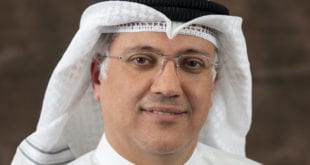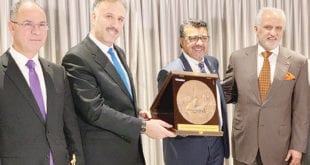Gulfsat has been providing the MENA region with satellite communications services since 1995. The last almost two decades have seen a great deal of change within the industry, and Gulfsat has had the agility to move with these changes. In this interview with Sales Executive, Chaitanya Gopal, Mohammed Al Haj, Chairman and CEO of Gulfsat gives us a candid insight into the company, the satellite communications market, Kuwait’s future in space and more.

Can you begin by giving us an introduction to yourself?
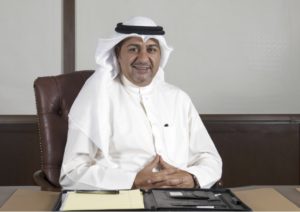
My background hails from the telecom industry. I was working for a Public Authority for Applied Education and Training on managing communication networks for 14 colleges and as part of that job, I was also teaching in the colleges. I slowly moved to the private sector in 1997-1998 and I started focusing on the network infrastructure that different companies established at that time, with my major focus being facility management and smart buildings. It was in this area that I became certified by the Bangalore Chapter of the IFMA (Integrated Facility Management Association) which focused on automation, the processes within a building and that looked at the idea of convergence.
I then started managing the Integrated Solutions at the mother company of GULFSAT, which was called United Networks. At this point, my role became very focused on looking at the integration between science, engineering, technologies, and sectors. Today, you can see that some sectors have already converged into a marriage such as technology, telecom and media, which has now effectively become one sector. This affects the way in which we structure our operation and the way we structure our organizations.
I have been Chair of the Board at GULFNET (United Networks subsidiary) and GULFSAT since 2010. GULFSAT Communications started more than 25 years ago, in 1994. As a company, it has been through a considerable technology learning curve. We began as a pure VSAT operator and we only did data at that time. We also carried the traffic for the voice services inbound and outbound to Kuwait via MOC. However, due to market dynamics and changes, GULFSAT started to evolve and we began to move from offering VSATs for vertical markets to the DTH business in 2007.
The idea was that we wanted to expand the source of revenue and to expand our reach to begin working within the space segment. In entering the DTH market, we thought that we were capitalising on our operations and technical knowhow. We discovered that it was a growing market. However, most of the engineers and technical people, not just within the group but also outside GULFSAT, were from a telecom mindset, and not from the broadcast arena. It was a very challenging move into the DTH market as most of the team were telecom experts. However, we found that this is an advantage because the technology is converging, as we currently see in the broadcast arena. The IT and the telecom engineers provide the best concepts and service delivery than the traditional methods of the broadcaster. For example, we use the Cloud content delivery model which give us a big advantage over our competitors in that area.
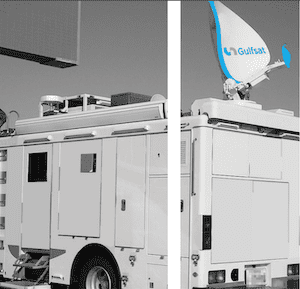
So, as time progressed, I could see that we were one step ahead. We started to capitalise on the model. GULFSAT today comprises of three business units, delivering three different products for three different market vertical markets. One we call G-Cast, which focuses on delivering TV and radio broadcast services over a DTH platform, and this makes up about 60% of our operation. The second is G-Link, our mission critical customer application that we are delivering, principally for the government and defence arena, oil and gas fields and banking sectors. This is the typical SCPC and iDirect platforms and managed VSAT platform, which we have offered for the past 25 years. We also have a new business unit, which started in 2008-2009 which is called G-talk, which is a specialised business unit with an emphasis on voice and is an international carrier for multiple paths, or between multiple paths. This is an important part of our business as a telecom operator. Some of the services are carried by satellite, some of them are carried by IP-MPLS infrastructures.
In terms of infrastructure design, GULFSAT has two platforms – we have a sky platform and we have a ground platform. We are connected to about 19 countries today with our own international and MPLS network where we carry content and voice and data traffic. Satellite is the core infrastructure for those operations.
So, we differentiate ourselves from other organisations that don’t have this kind of convergence within their business model or a platform. Today, we are looking again at the future so that we can further innovate and expand our market offering. We are looking to establish a new Broadcast Media Integration (BMI) business unit which will focus on the integration of media infrastructures and broadcast infrastructures with the IT engine and IT core.
GULFSAT is in the satellite business but we are also in the media business, we are the network business, we are into the technology business. So that’s why we want to be ahead and evolve and to constantly be building new business models to stay ahead of the competition.
So, does that mean then space becomes irrelevant? Or do you still think Kuwait is in the process of deliberating if they should have their own satellite, maybe it could be for downstream applications completely, for remote sensing, or for broadcast even?

We are a more of a regional company. We deal with about 24 countries, mostly in the Middle East and North Africa. Technology is evolving in the field of mobility and there is increasing fibre infrastructure expanding those networks. It is impacting on the need for VSAT. The growth of 3G and 4G LTE network delivery is also affecting the dependency on VSAT. However, there are certain markets where there is no other solution except satellite. For airborne or maritime or remote areas such as offshore, satellite is the only way to deliver services. We are simply complementing our portfolio and differentiating ourselves to the last end customer. We don’t want to be just deliver connectivity. We want to add value within that connectivity by evolving the delivery of the content. That’s why we end up developing different business units, to provide a full turnkey solution to the end customer.
So, let’s address Kuwait. Yes, true. It’s not only Kuwait. If you look around everybody here today wants to launch a satellite – Iran, they did, Oman had a plan, Iraq wants to, the Emirates did, Saudi and also Qatar with EshailSat. I think it’s good and bad. It’s good in terms of security and having an independent set-up but will this pay the bills? What will be the return on that investment? If it’s only going to for a strategic purpose, then you don’t care about the investment. Right? But if it’s commercial, then you have to do a feasibility plan. They have to balance it out.
Kuwait still has a plan, but I think instead of launching a satellite, they will look to a hosted payload model where they will add a payload into a satellite which is a more cost-effective option than manufacturing and launching its own.
Focusing on Kuwait too, what I would like to ask is, can the space industry or a future space industry ever play a part in somehow aligning with the vision 2035 goals, reducing Kuwait’s dependence on oil? And if yes, how can we inspire the youth and involve them?
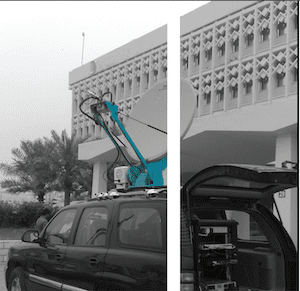
First of all, yes, one hundred percent. The space industry should and must have a role in this kind of plan. The reason is, in space, there are no limits. There are a huge number of applications that space serves and many applications evolving such as smart LNB, M2M applications and remote sensing. I think that GULFSAT and other entities should play a big role in this, especially in Kuwait which is looking to become a smart city and to introducing innovative platforms to enable a different style of living. Space technology should be part of that. In the future, we will have different buildings and properties, which will be connected to space, through machine to machine, remote sensing, remote facility management, office buildings and properties, like a digital node. So, indeed, there is a need for the satellite industry to be involved with this kind of development in the vision 2035 goals.
And finally, what really motivates you to come into work every day, and lead an amazing organization?
Well, it’s a very good question. Every day, I want to do something different. That’s the kind of person I am. I always like to innovate and build new things and new concepts. If I’m driving a business where I cannot do much, it’s going to be a boring business. Right? Right. I like to innovate. However, even in the satellite business, you have a lot of boundaries because it’s a very niche market. However, the team at GULFSAT have big plans. I think we are all after success. And believe me, if we were not feeling and enjoying that success, no-one will go to the office and have the energy to do the job. I have a great team behind me, and I believe in the people, the human resources which is the engine behind this company. We are one family, and Alhamdulillah we are doing a good job.
SpaceWatchGL thanks Mohammed AlHaj vice chairman and CEO of GULFSAT Communications for the interview.
 SpaceWatch.Global An independent perspective on space
SpaceWatch.Global An independent perspective on space

